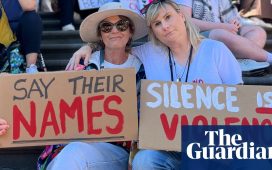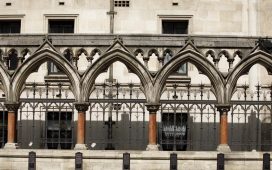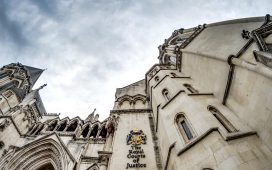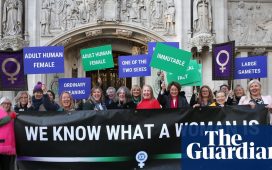In broad daylight on 16 April, three armed and uniformed men held up a city centre mobile phone shop.
Threatening staff, they helped themselves to about £700 worth of goods, before making off on a motorbike, disappearing into the busy streets of Goma, in the eastern Democratic Republic of the Congo.
That the robbery took place within spitting distance of the city hall, in the capital of North Kivu province, was an example of a new lawlessness that has rocked the city of 2 million people since M23 rebels began a siege of the main roads into Goma in February.
“Dying is normal, robberies are normal,” said the shop manager, who asked not to be named for his safety. “People try to normalise what’s not normal. We try to adapt because we have no other choice.”
The phone shop staff were lucky to escape with their lives. Last month alone, criminals shot dead at least 29 people in Goma, according to the International NGO Safety Organisation, with 22 more wounded. April’s death toll marks a new record of bloodshed for the city since 56 people lost their lives in an army massacre of protesters last year.
The rising insecurity in Goma follows the advance of the Rwandan-backed M23 rebels, which has trapped many thousands of Congolese soldiers as well as irregular pro-government fighters known as Wazalendo (“patriots” in Swahili) inside a radius of about 20 kilometres around the city.
A Tutsi-led group, the M23 militia seized Goma in 2012, before being driven out. But after years of inactivity, the rebel group renewed its insurgency in late 2021. It swiftly captured swathes of territory in North Kivu, on the border with Rwanda, whose government – led by the longstanding president, Paul Kagame – denies UN and US reports that it backs the M23, including with its own troops.
An offensive in February saw the militia cut off Goma’s last remaining overland supply route, which runs from the Rwandan border along the shore of Lake Kivu.
Behind the frontlines, armed men – who are often unpaid by the militias they serve – have turned to robberies, extortion and rape, both inside the city limits and in the lawless tent cities that harbour about 700,000 displaced people outside. Congolese soldiers have also been accused of abuses, but blame is often pinned on the untrained Wazalendo.
“We don’t really know if they’re Wazalendo or if they’re thieves,” said the phone shop manager.
The Wazalendo phenomenon emerged after the Congolese president, Félix Tshisekedi, urged young people to form vigilante groups against the M23 in late 2022. Today, a loose coalition of civilians turned fighters, as well as seasoned members of other armed groups, fall under the term Wazalendo.
The exact number of the pro-government militia is uncertain, but according to analysts there are likely to be thousands of Wazalendo around Goma. Several fighters interviewed by the Guardian said they rarely, if ever, received payment and survived on public donations of flour and beer. But they denied preying on the population, blaming Congolese troops instead.
“It’s not hidden, it’s the army that does that,” said one fighter in a gloomy bar on the outskirts of Goma. A 26-year-old with the nom de guerre Mobomi (“killer” in western DRC’s main language, Lingala), the man said he and his fellow fighters “take care” of soldiers if they caught them robbing or threatening people in the area.
“My motivation is patriotic,” said Mobomi, dressed in dusty clothes and a cloth hat. He first joined the local Mai-Mai militia at 17 before volunteering to defend Goma last year. “I’m ready to fight until the end,” he said.
The sentiment is widespread. A senior commander in the APCLS – a well-organised militia with its roots in North Kivu’s Hunde community – said the Wazalendo were the city’s first line of defence, and accused the army of routinely fleeing from battle.
But he admitted that abuses were a reality with so many gunmen roaming around Goma, including by the men under his command. “I can’t say I’m perfect,” he said. “There are a lot of armed groups; every group has its way of behaving.”
A Congolese army spokesperson in North Kivu did not respond to questions about alleged abuses by soldiers.
The authorities have attempted to crack down on the crime wave, notably after four people were killed during an attempted hold-up in a residential district on 10 April. Last month, North Kivu’s military governor banned Wazalendo from entering the city with weapons.
But the measure means little in the crowded displacement camps on Goma’s periphery, where state control is almost absent. “Any type of violence or abuse you can imagine, it’s happening,” said Natàlia Torrent, head of mission for Médecins Sans Frontières (MSF) in Goma.
The humanitarian organisation was registering about 700 cases of rape a week in March, a figure thought to under-represent the true number of cases.
Gaspar Ndagijamana, 35, fled the rebels last year and found shelter under a small tarpaulin in the Kanyaruchinya displacement camp north of Goma. In late March he was shot for refusing to hand over his mobile phone.
The assailant then shot up Ndagijamana’s motorbike, which had been his sole source of income as a taxi driver. The same fighter returned later in the evening demanding money from Ndagijamana’s pregnant wife Laetitia, and shot her too when she refused. Both survived, although Laetitia has since experienced complications with her pregnancy.
“Bullet wounds are very common here,” said Ndagijamana, inside his stifling tent. “I have no work, I don’t know what to do.”











